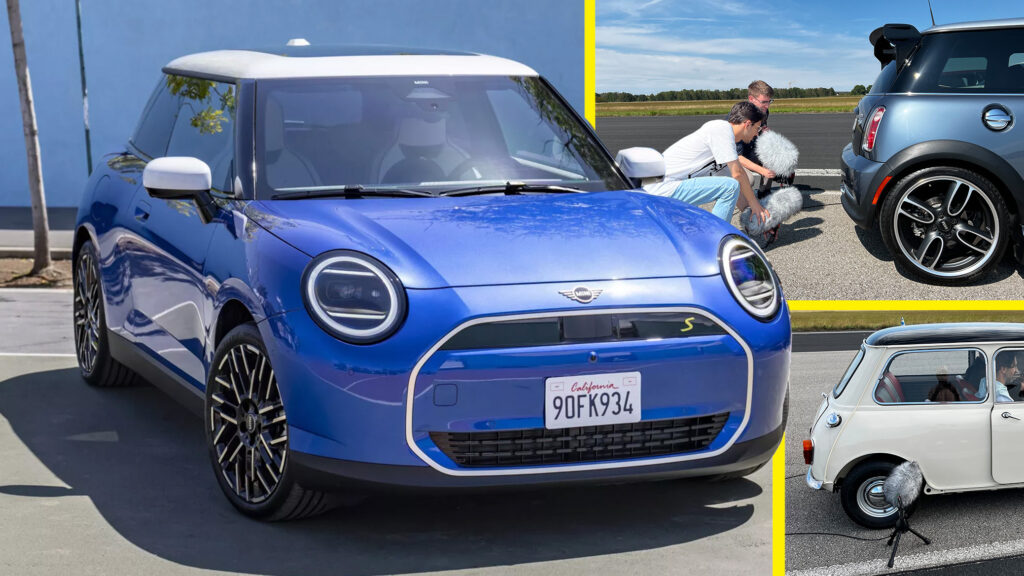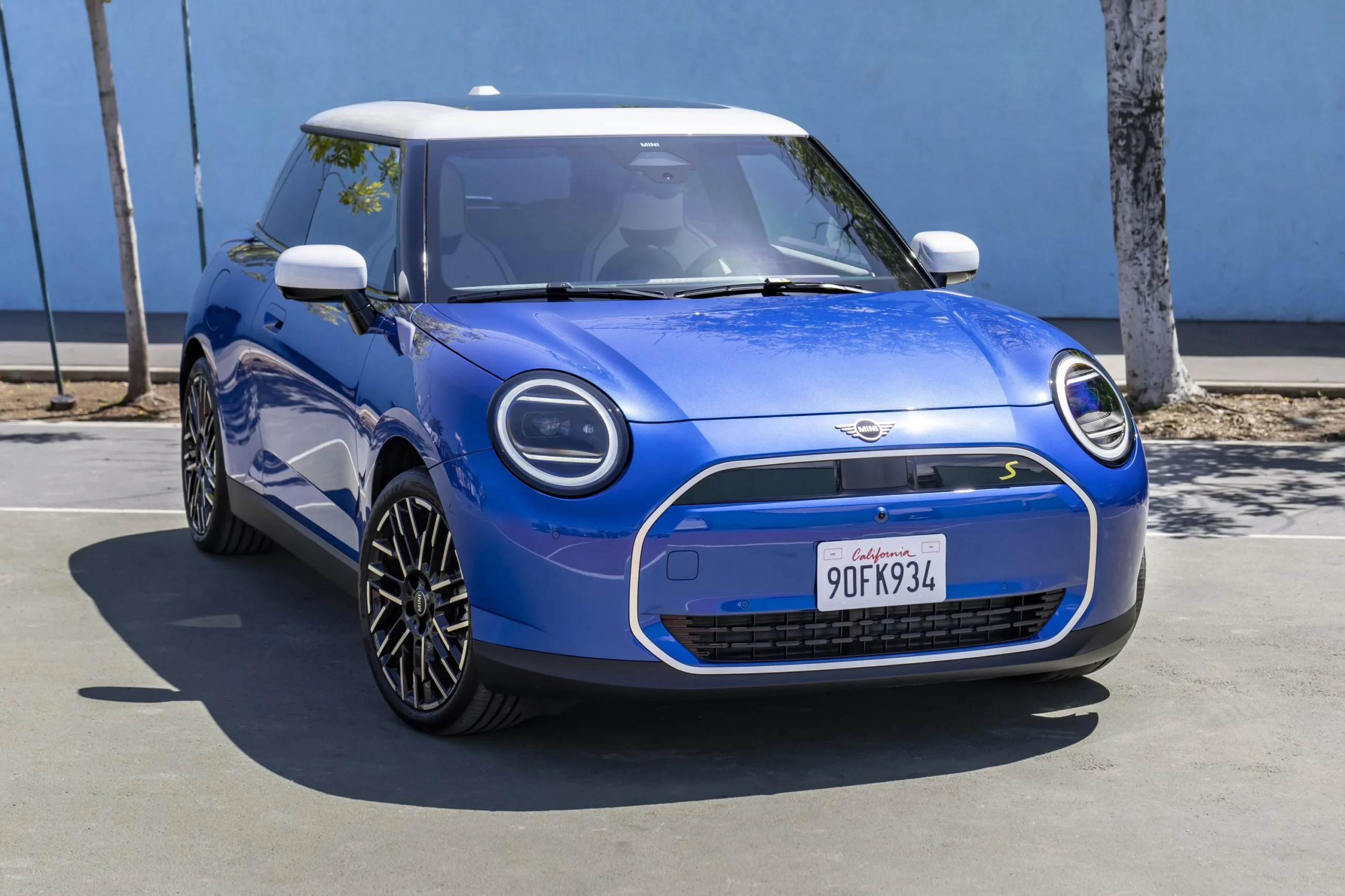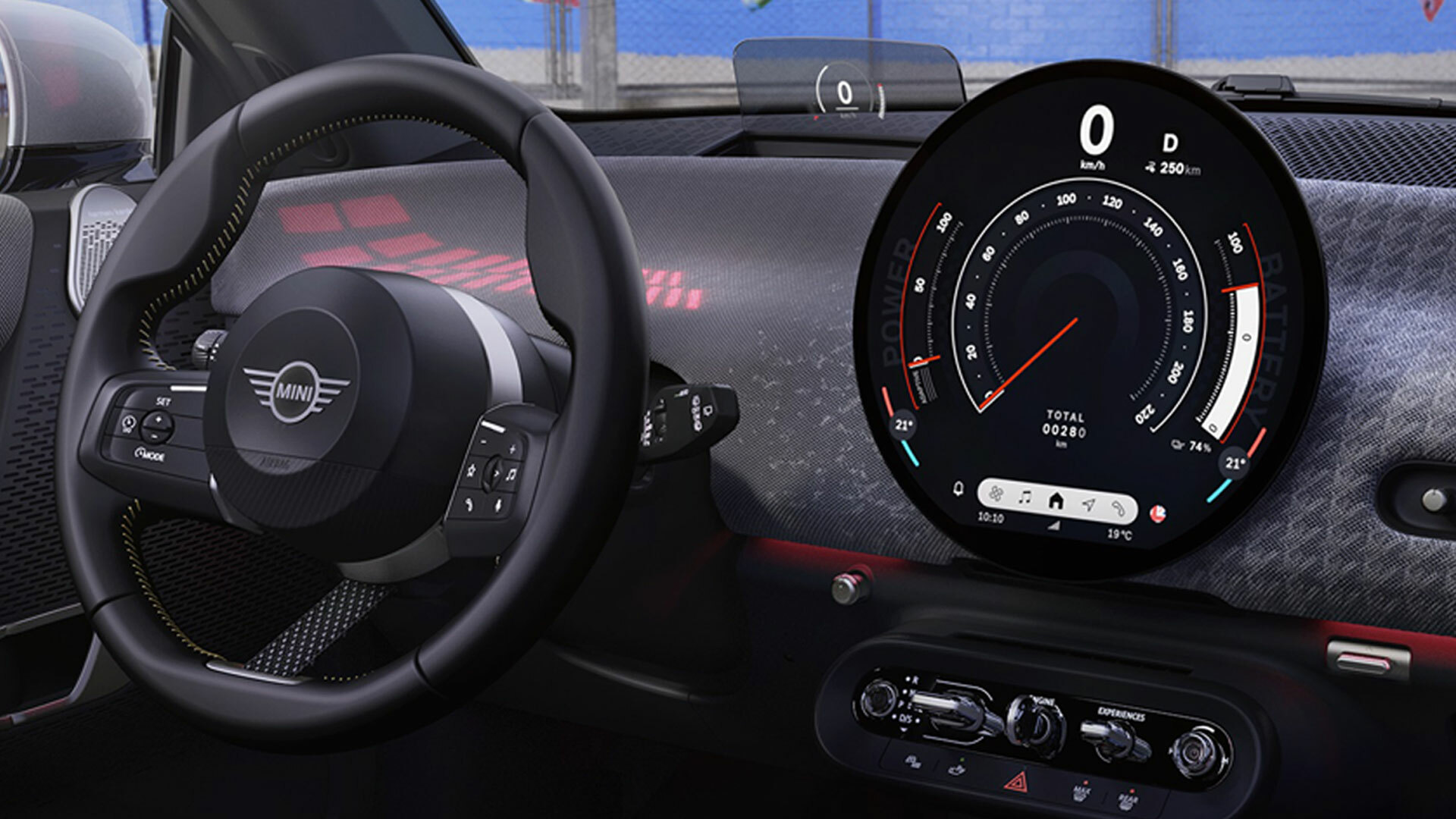If you’ve already seen the interior pictures of the electric 2025 Mini Cooper you’ll know that the dashboard employs modern technology such as a head-up display and an OLED infotainment screen to cleverly breathe new life into classic Mini design features like the center-mounted circular speedometer.
But that’s not the end of the retro-futuristic mashup. Mini has created a series of synthesized soundtracks for the new electric drivetrains, and one of them heard when the driver engages Timeless mode, borrows authentic sounds recorded from some of the greatest ever combustion-powered Minis, including the 1960s Mini Cooper S and the John Cooper Works GP from 2006.
The noise isn’t a straight-up replication of an A-Series and supercharged Tritec inline-four, but rather a blend of those motors’ thrums, buzzes, and whines. The cleaner sound of the default Core mode is heard outside the car no matter which mode is selected inside the cabin.
The Timeless mode, which also switches the central display to a large central speedometer, just like the ones seen on older Minis, definitely has a much more gruff sound than the other modes. But the harder you lean on the gas pedal, the more the sound morphs into a pure electric sound, taking you from the past to the present.
Related: New 2025 Mini Cooper EV’s Overhauled Interior Revealed
Mini describes the Core sound as “inviting, energetic and inspiring,” but drivers who want something a little more urgent can flick to Go Kart mode, whose more varied pitch and load curves should get you in the mood for carving through sewers in Turin.
Alternatively, if you’re stuck in city traffic and want to de-stress, Balance mode will suit your mood much better. Initially designed for the 2021 Urbanaut minivan concept, it draws from different sounds heard in a forest, including water trickling in a stream, the chirping of crickets, and the rustling of the wind in the tree tops.
Mini’s designers have also assigned different sounds for warnings and notifications such as the parking sensors and turn signals. The idea is that each will have its own brand sound that will become as identifiable and easily distinguished as traditional visual tell-tales in a gauge cluster.

























